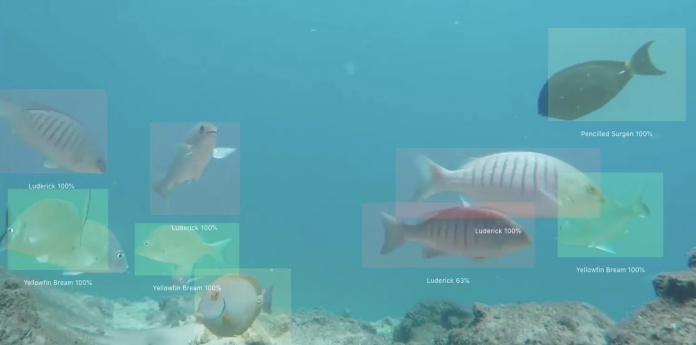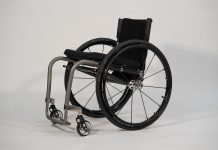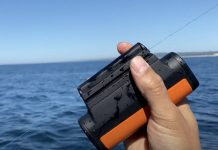
Media Release by AMGC
Australian inventors of a world-first recording device for sport fishing adventures and fishery stock monitoring have refocused their product and expanded their team of collaborators in moves they believe will help bring a sharper product to market.
Siren Cameras was founded in 2018 by entrepreneurs Phil West and Calum McPherson to commercialise an innovative dual-lens camera. The patented device can simultaneously record footage of both fish and angler. Siren launched a project in 2020 to commercialise the product, which was supported by a $178,250 co-investment from the Advanced Manufacturing Growth Centre (AMGC)[1].
Responding to the challenge of designing a ‘sofishticated’ electronics device able to operate reliably in difficult environments, West decided to bring in extra help – to rethink, redefine, redesign, and re-engineer their project.
“We made a call really early on to bring in new collaborative partners. We were able to lean on AMGC and its network around Australia to locate a new design house, Ingenuity Design Group, a new contract manufacturer, Entech Electronics, and commence discussions with Griffith University,” explains West.
“All three organisations are world-class and have really taken our initial idea to the next level in terms on design, usability, flexibility and further business opportunities. Ours is an advanced product, and its subsystems must integrate properly. Similarly, our project team and its parts need to work together seamlessly.
“As well as rejigging our team, we also realised we needed to focus on designing our mechanical systems around what we hoped to achieve through our electronics, rather than the other way around.” Said West.
As a result of working alongside its new partners, Siren has evolved its original design to now include detachable mounts and fixings allowing for use in a variety of activities beyond angling. Working with Griffith University’s Global Wetlands Project, Siren has explored equipping the camera with advanced AI (Artificial Intelligence) capabilities allowing for the automatic identification of fish species to complement other environmental information already captured by the camera unit.
“Conceiving a completely new product, with a high degree of complexity, and then bringing it all the way to customers is an incredible set of challenges – especially so if you’ve never attempted it before,” says Dr Jens Goennemann, Managing Director, AMGC.
“What this evolution in Siren’s product demonstrates is the importance of collaboration and the value that designers, engineers, and researchers bring to manufacturing.”
Siren’s relationship with Griffith’s aquatic and deep learning experts is at an early though highly promising stage. Within the university’s ‘Global Wetlands Project’ is an AI Model named ‘FishID’ which offers a possible solution for Siren’s long-term vision, not only bringing unique experiences to anglers, but simultaneously collecting data on fish species and their numbers to aid marine conservation.
“With automated fish recognition we aspire to build the largest recreational fishing database in the world, and from that help solve the global problem of understanding our fish stocks and trends,” explains West.
“We can do that by making the fishing community part of collecting the data informing the rules by which our coastal waters are governed. The fishing community and government sometimes butt heads on rules and regulations, and this could make their relationship more collaborative.”
“Like many start-ups, you only really get one opportunity to make a first impression. Therefore, we want to put forward the best product possible to ensure we lure customers and keep them on the hook,” adds West.
“It’s going to be a high-end product, and it must be reliable and perform. That’s what the AMGC has helped us on.”
Siren plans to open its order books during the second half of 2022 to give Australians first access to the pioneering product ahead of the company’s final commercialisation and full-market launch.
“More companies must take on the difficult and important task of commercialising complex products, as well as display the wisdom to realise that you need many different kinds of expertise to that,” adds Dr Goennemann.
“It’s rare you’ll find a company that has all that expertise inside its four walls. The smart manufacturers collaborate.”
For further details of the project, partner organisations and funding arrangements visit – https://www.amgc.org.au/project/manufacture-of-dual-lens-fishing-camera/
[1] https://www.amgc.org.au/wp-content/uploads/2020/09/Siren-lures-AMGC.pdf

















